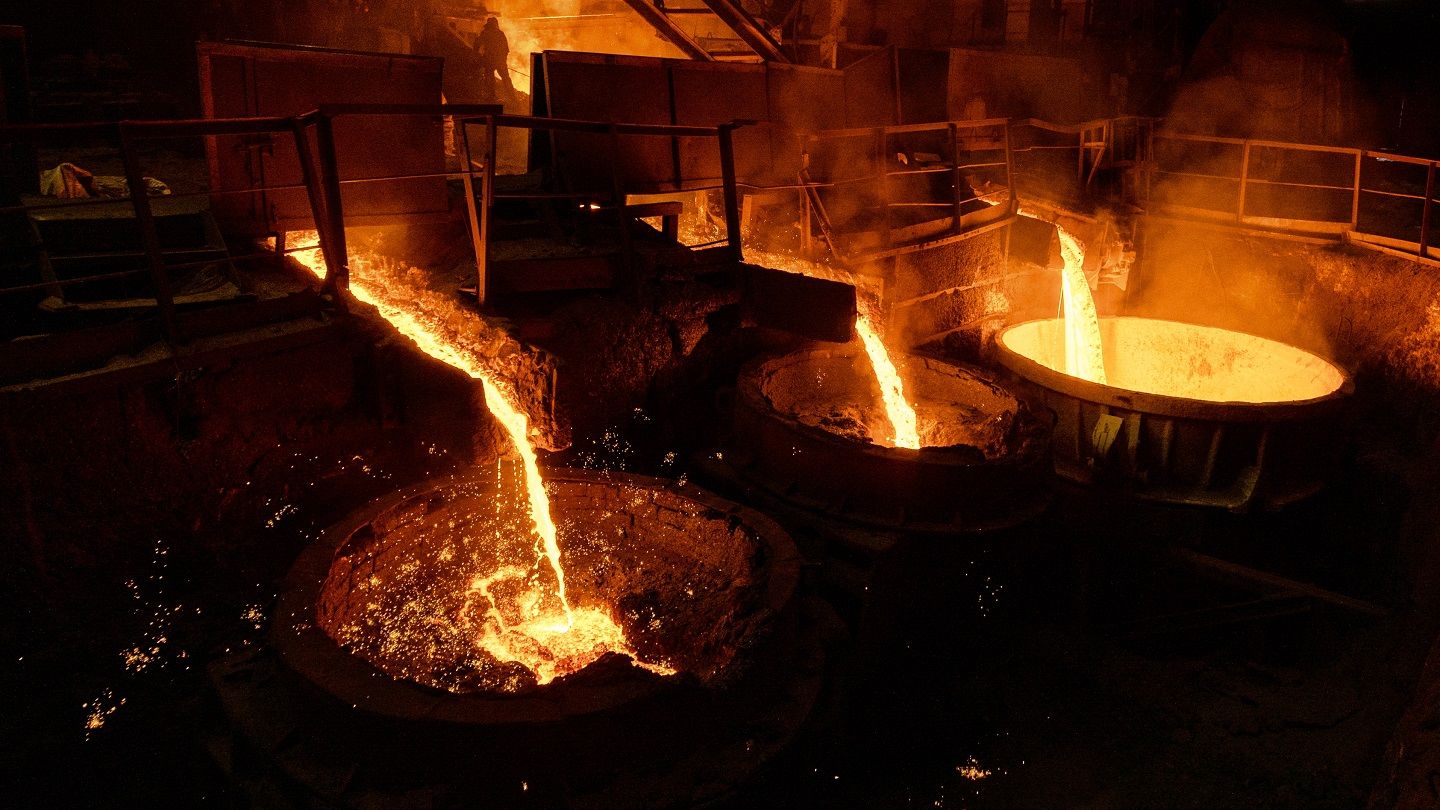
Researchers at MIT, led by professors Franz-Josef Ulm, Admir Masic, and Yang-Shao Horn, have discovered that mixing cement, carbon black, and water in certain proportions results in concrete that doubles as a supercapacitor that is able to store electrical energy. In a paper published in the journal PNAS on July 31, 2023, the researchers wrote:
“The large-scale implementation of renewable energy systems necessitates the development of energy storage solutions to effectively manage imbalances between energy supply and demand. Herein, we investigate such a scalable material solution for energy storage in supercapacitors constructed from readily available material precursors that can be locally sourced from virtually anywhere on the planet, namely cement, water, and carbon black.
“Texture analysis reveals that the hydration reactions of cement in the presence of carbon generate a fractal-like electron-conducting carbon network that permeates the load-bearing cement-based matrix. The energy storage capacity of this space-filling carbon black network of the high specific surface area accessible to charge storage is shown to be an intensive quantity, whereas the high-rate capability of the carbon-cement electrodes exhibits self-similarity due to the hydration porosity available for charge transport.
“This intensive and self-similar nature of energy storage and rate capability represents an opportunity for mass scaling from electrode to structural scales. The availability, versatility, and scalability of these carbon-cement supercapacitors opens a horizon for the design of multifunctional structures that leverage high energy storage capacity, high-rate charge/discharge capabilities, and structural strength for sustainable residential and industrial applications ranging from energy autarkic shelters and self-charging roads for electric vehicles, to intermittent energy storage for wind turbines and tidal power stations.”
In a blog post, MIT said that capacitors are very simple devices. They consisting of two electrically conductive plates immersed in an electrolyte and separated by a membrane. When a voltage is applied across the capacitor, positively charged ions from the electrolyte accumulate on the negatively charged plate, while the positively charged plate accumulates negatively charged ions.
Since the membrane in between the plates blocks charged ions from migrating across, this separation of charges creates an electric field between the plates, and the capacitor becomes charged. The two plates can maintain this pair of charges for a long time and then deliver them very quickly when needed. Supercapacitors are simply capacitors that can store exceptionally large charges.
The amount of power a capacitor can store depends on the total surface area of its conductive plates. The key to the new supercapacitors developed by this team comes from a method of producing a cement-based material with an extremely high internal surface area due to a dense, interconnected network of conductive material within its bulk volume.
The Supercapacitor Breakthrough

Image via PNAS
The researchers achieved this by introducing carbon black — which is highly conductive — into a concrete mixture along with cement powder and water, then letting it cure. The water naturally forms a branching network of openings within the structure as it reacts with cement, and the carbon migrates into these spaces to make wire-like structures within the hardened cement. These structures have a fractal-like structure, with larger branches sprouting smaller branches, and those sprouting even smaller branchlets, and so on, ending up with an extremely large surface area within the confines of a relatively small volume.
The material is then soaked in a standard electrolyte material, such as potassium chloride — a kind of salt — which provides the charged particles that accumulate on the carbon structures. Two electrodes made of this material, separated by a thin space or an insulating layer, form a very powerful supercapacitor, the researchers found.
The two plates of the capacitor function just like the two poles of a rechargeable battery of equivalent voltage. When connected to a source of electricity, energy gets stored in the plates just like in a battery. When connected to a load, the electrical current flows back out to provide power.
“The material is fascinating,” Profesor Masic said, “because you have the most-used manmade material in the world — cement — that is combined with carbon black, that is a well known historical material. The Dead Sea Scrolls were written with it. You have these at least two millennia old materials that, when you combine them in a specific manner, you come up with a conductive nanocomposite, and that’s when things get really interesting.”
As the mixture sets and cures, he said, “The water is systematically consumed through cement hydration reactions, and this hydration fundamentally affects nanoparticles of carbon because they are hydrophobic (water repelling).” As the mixture evolves, “the carbon black is self-assembling into a connected conductive wire,” he says. The process is easily reproducible with materials that are inexpensive and readily available anywhere in the world. And the amount of carbon needed is very small — as little as 3% by volume of the mix — to achieve a percolated carbon network, Masic said.
The Supercapacitor & The Energy Revolution
Supercapacitors made of this material have great potential to aid in the world’s transition to renewable energy, Ulm wrote. The principal sources of emissions-free energy — wind, solar, and tidal power — all produce their output at variable times that often do not correspond to the peaks in electricity usage, so ways of storing that power are essential.
“There is a huge need for big energy storage,” Ulm said and existing batteries are too expensive and mostly rely on materials such as lithium, whose supply is limited. That means cheaper alternatives are badly needed. “That’s where our technology is extremely promising, because cement is ubiquitous,” Ulm says.
The team calculated that a block of nanocarbon-black-doped concrete that is 45 cubic meters (or yards) in size — equivalent to a cube about 3.5 meters across — would have enough capacity to store about 10 kilowatt-hours of energy, which is considered the average daily electricity usage for a household. Since the concrete would retain its strength, a house with a foundation made of this material could store a day’s worth of energy produced by solar panels or windmills and allow it to be used whenever it’s needed. As an additional bonus, supercapacitors can be charged and discharged much more rapidly than batteries.
There is a tradeoff between the storage capacity of the material and its structural strength, the researchers found. By adding more carbon black, the resulting supercapacitor can store more energy, but the concrete is slightly weaker. This could prove useful in applications where the concrete is not playing a structural role or where the full strength potential of concrete is not required. For applications such as a foundation, or structural elements of the base of a wind turbine, the “sweet spot” is around 10% carbon black in the mix, they found.
Roadways That Store Electricity
Another potential application for carbon-cement supercapacitors is for building concrete roadways that could store energy produced by solar panels alongside the road and then deliver that energy to electric vehicles traveling along the road using the same kind of technology used for wirelessly-rechargeable phones.
Initial uses of the technology might be for isolated homes or buildings or shelters far from grid power, which could be powered by solar panels attached to the cement supercapacitors. Ulm says that the system is very scalable, as the energy storage capacity is a direct function of the volume of the electrodes. “You can go from 1-millimeter-thick electrodes to 1-meter-thick electrodes, and by doing so basically you can scale the energy storage capacity from lighting an LED for a few seconds, to powering a whole house.”
Depending on the properties desired for a given application, the system can be tuned by adjusting the mixture. For a road that charges electric cars, very fast charging and discharging rates would be needed. For powering a home “you have the whole day to charge it up,” so slower-charging material could be used, Ulm said. “So, it’s really a multi-functional material.”
In addition to its ability to store energy in the form of supercapacitors, the same kind of concrete mixture can be used as a heating system by simply applying electricity to the carbon-laced concrete. Ulm believes this as “a new way of looking toward the future of concrete as part of the energy transition.”

The Takeaway
This is very exciting news. Just imagine if every new concrete foundation or building became a storage battery. That could turbocharge the renewable energy transition. The technology could make distributed energy systems like microgrids more feasible because of the reduced cost of storing electricity, since separate storage batteries would not be needed.
Of course, this research needs to blend with new technologies that are reducing the carbon footprint of cement. Combine low carbon concrete with energy storage technology, and a whole world of new possibilities opens up.
The description above is for those who are not research scientists. Those who want all the details, including graphs, charts, and the methodology used in the research are encouraged to visit the PNAS site, where everything you could possibly want to know about this technology is laid out in exquisite detail.
Here at Casa CleanTechnica, we hear the words “game-changing” and “breakthrough” all day, every day. But we have to say, this news gets us excited. Low cost local energy storage from materials that are widely available? That is news we can all use.
I don’t like paywalls. You don’t like paywalls. Who likes paywalls? Here at CleanTechnica, we implemented a limited paywall for a while, but it always felt wrong — and it was always tough to decide what we should put behind there. In theory, your most exclusive and best content goes behind a paywall. But then fewer people read it! We just don’t like paywalls, and so we’ve decided to ditch ours. Unfortunately, the media business is still a tough, cut-throat business with tiny margins. It’s a never-ending Olympic challenge to stay above water or even perhaps — gasp — grow. So …




